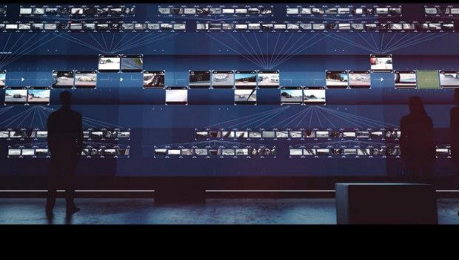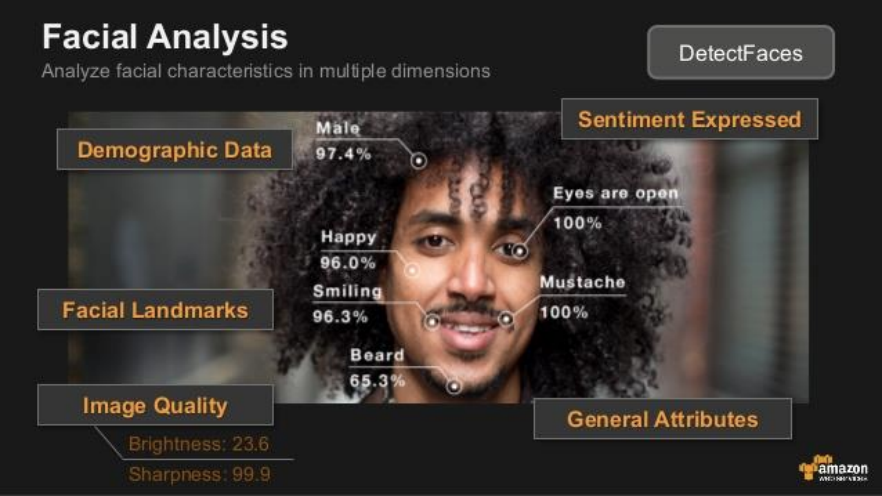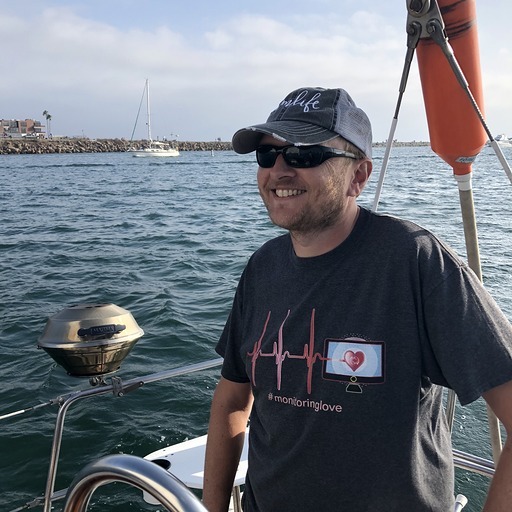Written by Ludovic Francois, CEO, Brad Winett, President and Adithya Bodi, Demand Generation Manager
Historically, the Media & Entertainment industry has been dependent on arcane on-premises technology. After transitioning from hand-splicing to digitization and non-linear workflows, video and film invariably pushed the boundaries of what computers could do digitally and consequently, working in the media industry usually involved having specialized computers, networks, and storage.
If we were to take a step back, the advent of computers in the media industry was in and of itself a significant leap that opened up an entirely new world of possibilities. Originally, editors were splicing film and then videotape together to deliver finished content but eventually, “purposebuilt” computers got fast enough to where content could be digitized and then manipulated entirely in the digital realm. However, despite the digitization, most of this technology was still very exotic, expensive, had to be installed on-premise and hence was accessible exclusively to the big studios and post-production companies.

Once general-purpose computers (and graphics accelerators) matured it became feasible for individuals to perform all but the most sophisticated processes on their personal computers or even laptops. And then like with the rest of the IT industry, The Cloud began to provide compelling benefits versus on-premise infrastructure, and further enable and democratize the creation of even the best content, no matter if you are a major studio or creating at home in your pajamas!
With the Cloud’s maturation, we have finally reached a point where normal everyday computing technology can quite effectively do the job. In fact, it has now made it possible for the average person to have relatively easy access to such technology, without having to invest in a soon-tobe-obsolete PC, and without limit as to compute power or scale you might need for an individual job. From wedding videographers to enterprise-level marketing and training departments, everyone now has access to the same tools as the largest studio that just a few years ago were unavailable to them. The Cloud, in essence, has now democratized technology in the Media and Entertainment industry.

Contents
- On-Prem vs. Cloud for the M&E Industry
- The Cloud for Studios and Post-Production Houses
- Less Obvious Benefits The Cloud Brings To The Media & Entertainment Industry
- How AI and Machine Learning Are Disrupting The Media & Entertainment Industry
- AWS and the Media & Entertainment Industry
- The 3 Segments in the Media & Entertainment Industry From A Cloud Standpoint
- Finding Cloud Experts Who Can Speak M&E
- About TrackIt
- About Ludovic François
- About Brad Winett
- About Adithya Bodi
On-Prem vs. Cloud for the M&E Industry
A natural question that arises in the reader’s mind is: Should I continue to use Capital Expenditures for on-premise solutions or does the Cloud and its Operating Expense model make more sense?
Well, it depends. There are two primary factors that need to be considered before you make the decision, the first one being the utilization of your solutions. If you’re a company with requirements that are substantial enough to be able to run your on-premise infrastructure all the time, then investing in on-prem might make sense from a dollar standpoint. That said, there are also numerous cases where running “all the time” workloads could be cheaper on the Cloud. Amazon EC2 Spot Instances regularly offer lower compute costs than what’s available in CapEx models. However, if you’re not using your infrastructure all the time or if you have “bursty” requirements, the Cloud is undeniably the better option. For example, let’s say you’ve got a heavy-duty project that is due in a couple of weeks, the Cloud is perfect for being able to burst when you have short-term, compute-intensive needs. In such a scenario, not only do you meet demands and get the job done, but you also pay only for what you use.
The second key factor that you need to consider is whether you’re willing to deal with the maintenance and continual modernization of your on-premise infrastructure along with the problems and complexities that come with it. If you’ve decided not to spend CapEx money, worry about provisioning for power and air conditioning, or often more importantly, falling behind the technology curve, the Cloud makes sense for you.
That said, the Cloud is an absolute no-brainer for individuals, smaller companies, and even big companies with moderate or occasional requirements (such as media projects for marketing departments and internal training departments) thanks to the flexibility and OpEx costeffectiveness it provides.
The Cloud is also a very low-risk option; if a project disappears, or an implementation doesn’t meet expectations, or for any reason you are not satisfied, it is a simple matter to tear down the environment and have no further costs sunk into the environment.

The Cloud for Studios and Post-Production Houses
However, for bigger companies in the Media & Entertainment industry such as studios and postproduction houses, things get a little more complex. These companies have already made huge investments in infrastructure and equipment that they are trying to depreciate over time. Hence the question for these companies becomes: Do I refresh my on-prem infrastructure or do I start moving some of my infrastructure to the Cloud? And what’s apparent from the media industry is that most of these big companies are indeed moving to the Cloud.
Storage
Storage – especially archive storage – is one of the earliest areas which has seen increased adoption of the Cloud by professional media companies. Recognizing the cost-effectiveness, universal access and inherent data protection capabilities of Cloud storage, studios and postproduction companies are leveraging the Cloud for their archive storage which has always been one of the hardest to manage components in their media environments.
Here is a link to a Case Study documenting how TrackIt helped one leading post production company with their archive storage needs.
Data Safety
Big companies in Media & Entertainment might also be concerned with the safety of their data, especially for disaster recovery. The Cloud makes it easy to create a copy of their content on the East coast and a duplicate on the West coast, for example.
Compute-Intensive Workflows
Compute-intensive workflows like transcoding and rendering constitute another area where the Cloud starts to really make sense for professional media companies. This is where solutions like AWS Elemental (transcoding service) and AWS Thinkbox (rendering service) are exceptionally compelling. For instance, if you’re rendering special effects for a scene in a movie and you need it by next week – then realize you don’t have the on-premise horsepower to get the job done – the cloud can scale as needed practically instantaneously. This is a typical application that can easily be put into the Cloud with and allows bursting your jobs with zero extra CapEx.
At TrackIt, we have recently built a file system specifically for an animation and VFX Rendering pipeline, here’s a link to the whitepaper.
Virtual Desktop Infrastructure (VDI)
The Cloud, despite the numerous benefits it provides, historically had not fully addressed the tasks that are human-intensive; such as providing an editor with the ability to sit at a remote desktop and scrub through a video in a highly interactive and responsive manner. Such functionality would require relative proximity to the Cloud data center, a fast network pipe, and efficient protocols that allow for a satisfying user experience between the Cloud and the remote user’s desktop.
This is one of the final frontiers to the full adoption of Cloud technology and VDI aims to bridge this gap. In essence, VDI technology is used to create a virtualized desktop environment on a remote server. Standard protocols can now service most needs with the advent of faster internet connectivity and the proliferation of regional cloud datacenters. Additionally there are some proprietary solutions that can provide advantages, such as AWS Nice DCV and AWS Teradici, some of Amazon’s current VDI offerings providing high-level performance for remote visualization and graphic-intensive applications.
Availability of Software Tools – Addressing The Needs of Artists In Studios & Post-Production Companies
It is important to note that artists (editors, directors, special effects producers) in most professional media companies have specific software tools that are very dear to them. With the increasing adoption of the Cloud by media companies, a considerable number of software providers are now providing Cloud offerings which allows artists to leverage the specific tools they need and want, but in the Cloud.

However, this can still be a barrier that must be overcome in some circumstances – and it’s also where the expertise of a company like TrackIt comes in handy. Based on your specific needs, TrackIt can build a solution that’s tailored to your requirements. This could mean building a onebutton deployment of a workflow (often called “Infrastructure as Code”, building a friendly user interface, automating the usage and management of your infrastructure, and also tieing solutions into the rest of your on-prem systems like job managers, asset management systems, accounting systems, etc.
Less Obvious Benefits The Cloud Brings To The Media & Entertainment Industry
Cloud adoption also provides a host of other benefits to companies in the Media & Entertainment industry, namely:
● Access to a Global Workforce: Companies can hire and successfully collaborate with creatives who prefer working remotely.
● Access to Tax Credits: Companies can unlock tax credits with infrastructure that can be stood up in any region.
● Ease of B2B Content Movement: Many content companies are already in the cloud and data movement is easier when it doesn’t have to traverse on-premise infrastructure.
● Agility & Freedom to Fail: Companies have the ability to rapidly deploy new projects and shut them down just as quickly if necessary.
● Scale: Companies can easily render VFX on the Cloud and execute multiple iterations to create high-quality content without having to worry about overloading on-prem compute resources.

● Content Enrichment: Access to AI & Machine Learning interference engines allows companies to tap into additional intelligence that propels content enrichment.
How AI and Machine Learning Are Disrupting The Media & Entertainment Industry
Metadata Management – Finally Solved!
Metadata management has always been not just onerous but really just a big challenge. People have often skimped on providing adequate human resources to hand-generate metadata (such as date, time, location, weather, actors in the scene, etc.) for the videos and content they create. As a result, there are literally millions of hours of content gathering dust with no real means to search through it – and therefore no realistic way to take advantage of it.
Fortunately, emerging AI and Machine Learning technologies have provided new and (and rapidly evolving) tools to solve this problem. AI and Machine Learning tools now allow us to transcribe, recognize locations, objects, faces, scene context, etc and sift through these old content files giving access to searchable metadata parameters that didn’t exist previously.
Opportunities for Monetization
One of the biggest opportunities with AI is the potential for monetization. With the example of leveraging AI and Machine Learning to sift through old media files, let’s say you find a video clip of someone drinking a Budweiser. You can now go to Budweiser and say ‘Hey, I found this old video clip of a man drinking a Budweiser, are you interested in using it somehow?’
Enhancement
AI and Machine Learning is starting to be leveraged for exciting and ground-breaking enhancement work such as converting old-video files into higher resolution quality using AI that intelligently fills in intermediary pixel data, far better than upscaling technologies previously utilized. Even “Dep Fake” capability can be utilized (hopefully in a responsible way) in the event an actor isn’t available, for example.

AWS and the Media & Entertainment Industry
As the largest provider of Cloud services, AWS (Amazon Web Services) has invested considerable resources to understand and address the specific needs of the Media & Entertainment industry. The approach AWS is taking is two-fold:
Services
Internally, on the products side, AWS has made two key acquisitions – Elemental in 2015 and Thinkbox in 2017 – to better cater to the needs of the Media & Entertainment industries. AWS Elemental allows media companies to deliver live and on-demand video to any device at any time, and provides video workflow related services such as transcoding, push-to-publish, etc. On the other hand, AWS Thinkbox is a service that is targeted at animation, special effects, and rendering. AWS has invested in these facilities and rapid product development is providing a steady stream of new features.
Engagements
Externally, AWS is also making efforts to acquire talent from the Media & Entertainment industry and has built an impressive end-user focused Media & Entertainment team dedicated to catering to the needs of its customers. The following are a few examples of how AWS has been engaging with its M&E customers:
● AWS and Fox Team Up to Reinvent Media Content Delivery (Press Release)
● Discovery Communications Migration to AWS (Case Study)
● Untold Studios & AWS Thinkbox – Setting Up A New Studio Without Any On-Premises Infrastructure
● Sony DADC NMS Media Supply Chain – Migration to AWS (Case Study)
● Sky News Royal Wedding Who’s Who Live application (Blog)
The 3 Segments in the Media & Entertainment Industry From A Cloud Standpoint
1. Professional Media companies: Studios and post-production companies
2. Enterprise: Marketing departments and internal training departments
3. Casual, Individual, Small businesses

Finding Cloud Experts Who Can Speak M&E
The Media & Entertainment industry has always been very localized in entertainment centers such as LA, New York, London, etc. As a result, there are not a lot of experts outside of these ‘hubs’ who really understand the uniqueness of media workflows, or even the terminology used in the industry.
What’s more, there are even fewer experts who are Cloud smart and understand how to adequately cater to the specific needs of Media & Entertainment companies.
TrackIt is one of the few companies that speaks the language and has proven expertise in media workflow technology.
“The principals in TrackIt have been serving the technology needs of professionals in the Media & Entertainment industry since 1995 and our engineers are well experienced in developing solutions that meet the real needs and dare I say “idiosyncrasies” of film and video workflows. We understand the vernacular as well as the intricacies of media creation and delivery.” Brad Winett, TrackIt President
About TrackIt
TrackIt is an international AWS cloud consulting, systems integration, and software development firm headquartered in Marina del Rey, CA.
We have built our reputation on helping media companies architect and implement cost-effective, reliable, and scalable Media & Entertainment workflows in the cloud. These include streaming and on-demand video solutions, media asset management, and archiving, incorporating the latest AI technology to build bespoke media solutions tailored to customer requirements.
Cloud-native software development is at the foundation of what we do. We specialize in Application Modernization, Containerization, Infrastructure as Code and event-driven serverless architectures by leveraging the latest AWS services. Along with our Managed Services offerings which provide 24/7 cloud infrastructure maintenance and support, we are able to provide complete solutions for the media industry.
About Ludovic François

Ludovic François founded TrackIt, a full-service cloud engineering and consulting company in 2014 and serves as its CEO & CTO. He has over 20 years of experience with start-up, cloud, storage, and M&E businesses.
Prior to founding TrackIt, Ludo has held key roles at Thales Airborne Systems, DataDirect Networks, and Nexsan. Ludovic is passionate about system administration, automation, education, and sailing.
About Brad Winett

Brad Winett is the President and Partner at TrackIt. Brad has over 40 years of professional experience in the technology industry and received a B.S. degree in Electrical Engineering from the University of Illinois.
He has held key roles at DZ Solutions, DDN Storage, and IBRIX, Inc.
About Adithya Bodi

Having spent over 6 years as a consultant working with companies spanning a broad variety of tech niches, Adithya has gained deep expertise in planning and executing content marketing and lead generation strategies. Adithya has been working with TrackIt since 2018 and has taken on a full-time position to assist the company in its growth while deepening his knowledge and expertise in AWS.
Adithya has a bachelor’s degree in Applied Physics and is an AWS Certified Solutions Architect Associate. He is also an avid calisthenics practitioner, a stock market enthusiast, and a recreational painter.

